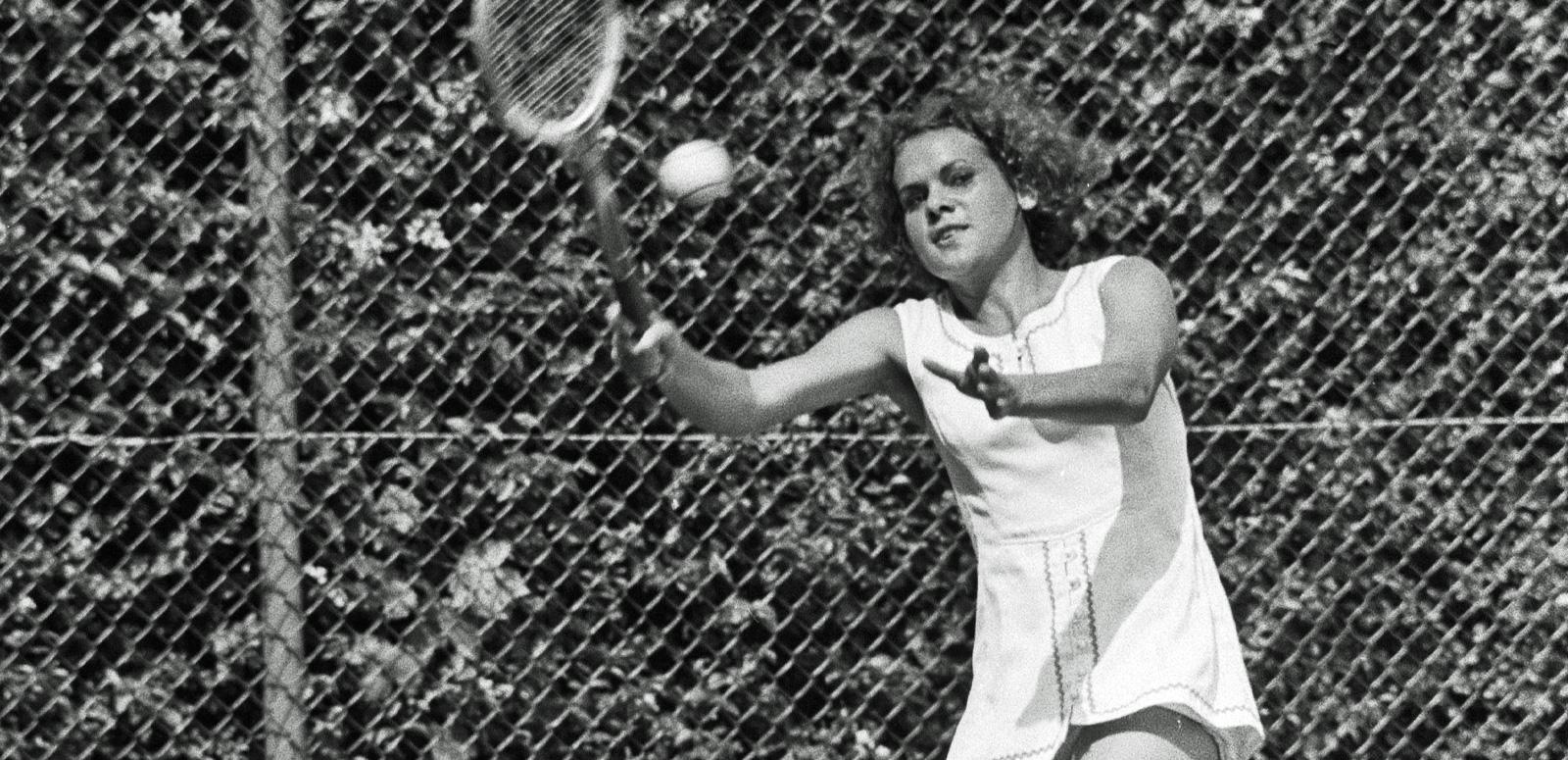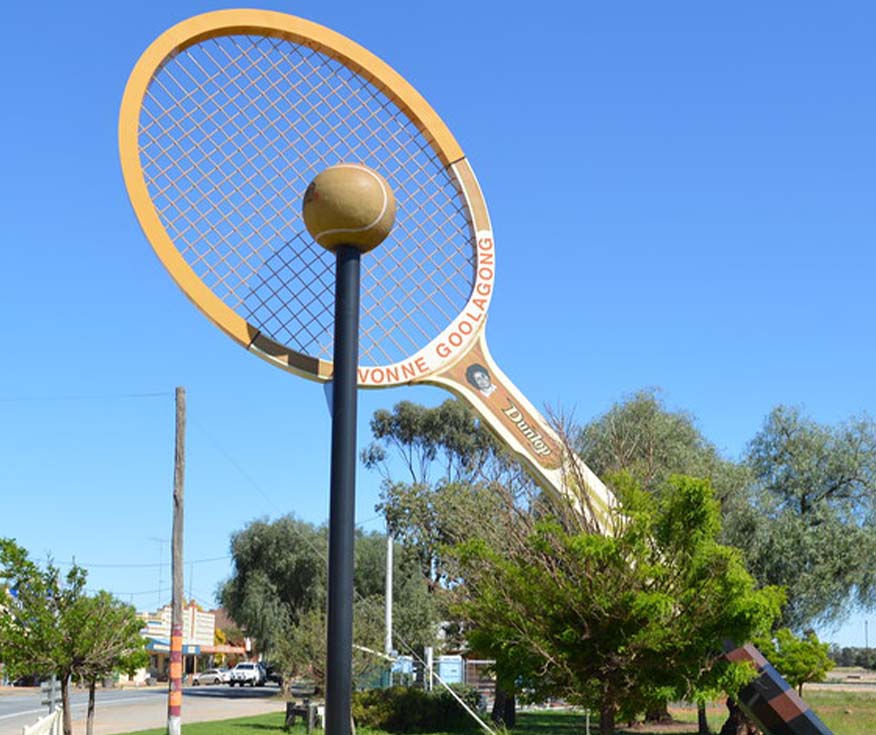WARNING: this article may contain names, images or voices of deceased Aboriginal and Torres Strait Islander people.
Johnny Milner takes a closer look at tennis legend Evonne Goolagong-Cawley's career – from Barellan to Wimbledon.

WARNING: this article may contain names, images or voices of deceased Aboriginal and Torres Strait Islander people.
Johnny Milner takes a closer look at tennis legend Evonne Goolagong-Cawley's career – from Barellan to Wimbledon.
Watershed moments in the history of a sport – and many other things – are often seen more clearly in retrospect. Looking back today across the development of Australian tennis, there is no greater trailblazer than Evonne Goolagong-Cawley, the Wiradjuri woman who dominated the women's game during the 1970s.
Evonne's career was remarkable by any measure – her list of superlatives includes being the first Indigenous Australian to win a singles grand slam and the first mother to win a major title in the modern era. She also ranks number two (after Margaret Court) for most grand slam titles by an Australian woman.
But the consequence of Evonne's achievements extends beyond the score line. She helped pave the way for future generations of Indigenous sportspeople – from Cathy Freeman to the recent tennis world number one, Ash Barty, who cites her as a key influence and mentor.
Since retiring, Evonne has been prominent in promoting Indigenous rights and health. In 2005, she established the Goolagong National Development Camp for Indigenous children to help improve health, education and employment. In 2018, she was awarded the Companion of the Order of Australia, the nation's highest honour, for services to tennis and the community.

Evonne Goolagong – later, Goolagong-Cawley, after she married former British junior tennis player Roger Cawley – grew up in the small NSW town of Barellan during the 1950s and 60s. She was the third of eight children to father Ken and mother Melinda, both Wiradjuri people. Evonne visited Aboriginal mission stations as a child – and in the time of the stolen generations, feared being taken away by the 'welfare man'.
She describes her childhood as poor but happy, and concedes that it wasn't until later that she became aware of the deep-seated discrimination towards, and horrific injustices imposed on, Indigenous Australians – including her own people and ancestors.
Tennis was Evonne's passion from an early age, when she began hitting a ball up against a water tank with a paddle made from a fruit box. At the age of 9, she was given her first tennis racquet and began practising at the local courts.
As a young teenager, she began to draw media attention for her achievements on the NSW tennis circuit. But it was not only her fluid stroke play, court speed and high tennis IQ that caught the media's eye – she also attracted attention for her Indigenous heritage.
In this clip from the 1971 documentary, The Goolagong Story, Evonne speaks about how the media treated her as a showpiece, almost an oddity, always prefacing her name with the words 'Aboriginal girl'. But she also mentions taking great pride in being the only Indigenous Australian tennis player on the international tour:
The Goolagong Story (excerpt), 1971. Courtesy: Cinesound Movietone Productions
Amid the constant media attention, Evonne – later nicknamed 'The Sunshine Girl' – went on to develop a formidable blend of offensive and defensive play. This style helped her succeed at the highest levels of the game – and in all formats, including singles, doubles and mixed-doubles. Perhaps her most exceptional performances were her two titles at the most prestigious tournament of all, Wimbledon – which she won twice, and once as a mother.
The clip above also includes imagery of Evonne playing at a local tournament at Barellan – a competition that attracted the largest crowd the town had ever seen. Also featuring is her famous win at the 1971 Wimbledon final against fellow Australian Margaret Court – where she received the trophy from Princess Alexandra of Kent.
These images showcase many of the qualities that came to define her game, including a patience in constructing points, an extraordinary serve-volley and an ability to return shots from difficult positions. It also features her backhand, one of the most highly regarded shots in women's tennis – a beautiful one-handed stroke that could be played with slice or topspin.
Evonne Goolagong-Cawley's accomplishments both on and off the court make her not only one of the great figures of Australian tennis but also a great Australian. Now she is being honoured again, with a mini-series in development at Screen Australia and a stage production by The Melbourne Theatre Company scheduled to debut in 2022 – deserved recognition in a world that celebrates too few of our Indigenous heroes in popular culture.
See more footage of Australian stars from the golden age of tennis in our Australian Tennis Greats curated collection.
The National Film and Sound Archive of Australia acknowledges Australia’s Aboriginal and Torres Strait Islander peoples as the Traditional Custodians of the land on which we work and live and gives respect to their Elders both past and present.